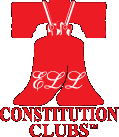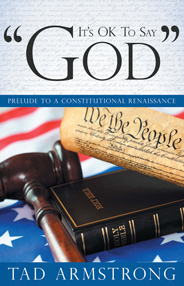3 Aug 2011
It’s still OK to say God
© St. Louis Post-Dispatch
Tad Armstrong
Last week American Atheists, Inc. filed a lawsuit seeking what has been dubbed the “World Trade Center Cross” to be either removed from the National September 11 Memorial and Museum or to be joined by their symbol, along with other non-Christian symbols. They call the cross “an insult to every non-Christian survivor of the attack” and the four individual plaintiffs allege they have suffered “dyspepsia, depression, headaches, anxiety and mental pain and anguish from the knowledge…they are made to feel officially excluded from the ranks of citizens who were directly injured by the 9/11 attack…”
What lawsuit will Christianity be faced with next week? Ignorance abounds on this topic, so much so that I was compelled to write my first book to set the record straight. “It’s Ok to say God” will be released soon. In the area of religious symbol litigation, the Supreme Court has been extraordinarily favorable to Christianity – too favorable.
The atheists get their encouragement from a 5-to-4 decision that gained Christianity a pyrrhic victory, at best, in the religious symbol wars. In Lynch v. Donnelly (1984), a municipally owned nativity scene in Pawtucket, Rhode Island, was allowed to stand in spite of a challenge by the American Civil Liberties Union that government involvement in the Christian symbol business represented an unconstitutional establishment of religion by affiliating city government with official sponsorship of Christianity. This particular nativity scene won out because it stood alongside a plastic Santa Claus and was otherwise shabby. As Justice Harry Blackmun said in dissent, “The crèche has been relegated to the role of a neutral harbinger of the holiday season, useful for commercial purposes, but devoid of any inherent meaning and incapable of enhancing the religious tenor of a display of which it is an integral part.”
Christians are fully capable of erecting their own nativity scenes at home and at church in settings unsullied by government’s touch or commercial motives. That we Christians need government to do our job is an insult to our integrity. The Lynch case marked the beginning of religious symbol wars that I am afraid are just beginning to heat up.
In 1989, a case out of Pittsburgh focused on a Jewish Menorah at the City-County Building and a Christian nativity scene at the County Courthouse, one block away. In Allegheny County v. ACLU, because of the precedent set in Lynch, the Menorah won and the nativity scene lost – at Christmas, for heaven’s sake – for the primary reason that this sacred Christian symbol was of better quality than the Pawtucket variety and actually sent the intended religious message.
These two wrongly decided cases have set the stage for religious symbol wars to be waged by all religions and atheists, for government cannot foster support for Christian symbols while leaving other sects and atheists in the dust.
However, these plaintiffs surely must know they don’t have a leg to stand on. In spite of some government funding of this otherwise private museum, this cross was not created by government to send a Christian message. Frank Silecchia, working with the New York City Fire Department, found the steel beam structure in the form of a cross in the rubble of the Twin Towers. It became a solemn place of solace, mourning and hope for Christian workers at ground zero for weeks and months to follow. It is an historical artifact.
If atheists had gathered ‘round some artifact in the aftermath of 9/11 to do whatever they do in times of sorrow, they would have cause to include whatever it was in the museum. One of the plaintiffs, Jane Everhart, called the cross an “ugly piece of wreckage” that “does not represent anything…but horror and death.” Perhaps something like a cremation oven at Auschwitz, maybe? We must never forget history. Historical artifacts help us remember.
Some may view this piece of history as representing horror and death and nothing more; others as hope and everlasting life on the heels of the most horrific underserved death ever known. The fact that these atheist plaintiffs would settle for removing the cross from the museum is telling. Their ultimate goal has nothing to do with displaying their “sacred” symbol, the atom, but rather to eliminate Christianity from our culture. The greatest insult in all of this is not to these plaintiffs, but to their fellow atheists who have the common decency to respect this slice of history.
It is undeniable, Ms. Everhart, that horror and death did reside at the intersection of Liberty and Church in New York City on September 11, 2001. How’s that for symbolism?

Comments










